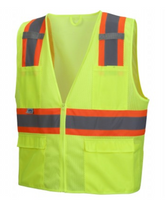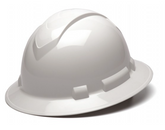A Guide to Choosing the Right Safety Work Gloves

Workplace injuries involving hands and fingers account for approximately 23 percent of all occupational accidents, making proper hand protection essential for any job site. Selecting the appropriate work gloves could easily mean the difference between a safe workday and a preventable injury that sidelines you for weeks or months.
The right safety gloves protect against cuts, punctures, chemical burns, extreme temperatures, and electrical hazards while maintaining the dexterity you need to perform your job effectively. With countless options available—from basic cotton gloves to specialized cut-resistant materials—understanding which features matter most for your specific work environment becomes crucial.
Professional safety managers consistently emphasize that glove selection requires careful consideration of multiple factors beyond basic protection levels. The best gloves balance safety, comfort, durability, and functionality to ensure workers actually wear them throughout their shifts. Here’s a brief guide to choosing the right safety work gloves for your team, regardless of job demands and position.
What Types of Workplace Hazards Require Glove Protection?
Different work environments present unique hand safety challenges that require specific protective features. Chemical processing facilities demand gloves that resist corrosive substances and prevent skin absorption. Construction sites need cut and puncture resistance from sharp materials like metal, glass, and concrete.
Manufacturing environments often combine multiple hazards, requiring gloves that protect against cuts while maintaining grip on oily surfaces. Food service operations need gloves that prevent contamination while allowing precise handling of knives and hot surfaces.
Electrical work presents shock and arc flash risks that standard gloves cannot address. Meanwhile, cold storage facilities require insulation without sacrificing manual dexterity for handling frozen products.
How Do You Assess Cut Resistance Levels?
The American National Standards Institute (ANSI) and International Safety Equipment Association (ISEA) established a five-level rating system for cut resistance, replacing the older four-level system to provide more precise protection categories.
Level A1 gloves protect against light cut hazards like cardboard and thin plastics. A2 and A3 levels handle moderate risks from sheet metal and glass handling. A4 gloves resist cuts from sharp blades and broken glass, while A5 provides high protection against severe cut hazards. It’s important to note that glove ratings go beyond A5 and up to level 9, providing workers with increased safety and protection against all they encounter.
Testing involves measuring how much weight a standardized blade requires to cut through the glove material. Higher levels indicate greater resistance, but they often reduce flexibility and tactile sensitivity.

Which Materials Offer the Best Puncture Resistance?
Leather gloves excel at preventing punctures from wood splinters, thorns, and moderate-sized sharp objects while maintaining good dexterity. However, they offer limited protection against fine needles or very sharp points.
Synthetic materials like nitrile and polyurethane create barriers against punctures while remaining lightweight and flexible. These materials work well for detailed assembly work where puncture protection matters more than heavy-duty durability.
Metal mesh gloves provide exceptional puncture and cut resistance but sacrifice comfort and flexibility. They work best for specialized applications like meat processing where maximum protection outweighs dexterity concerns.
What Chemical Resistance Features Should You Consider?
Chemical-resistant gloves use specific materials designed to prevent harmful substances from reaching your skin. Nitrile gloves resist oils, greases, and many industrial chemicals while maintaining flexibility for detailed work.
Neoprene gloves handle acids, alcohols, and caustic solutions effectively. PVC gloves work well with acids and bases but break down when exposed to organic solvents.
Breakthrough time indicates how long a chemical takes to penetrate the glove material. Longer breakthrough times provide extended protection, but no glove offers permanent resistance to all chemicals.
How Important Is Grip Performance in Wet Conditions?
Wet environments dramatically reduce grip strength and increase accident risks. Textured glove surfaces improve traction on wet tools and materials through enhanced surface contact.
Palm coatings made from latex, nitrile, or polyurethane create superior wet grip compared to smooth materials. These coatings also extend glove life by reducing wear on high-contact areas.
What Temperature Protection Do Different Gloves Provide?
Heat-resistant gloves protect against temperatures ranging from 200 degrees Fahrenheit for basic applications up to 2000 degrees Fahrenheit for extreme industrial processes. Leather gloves handle moderate heat while maintaining flexibility for tool use.
Aluminized gloves reflect radiant heat in foundries and glass manufacturing. Aramid fiber gloves like Kevlar resist heat while providing cut protection, making them ideal for hot metal handling.
Cold weather gloves incorporate insulation materials that trap warm air while allowing finger movement. Waterproof membranes prevent moisture penetration that reduces insulation effectiveness.
How Do You Determine Proper Glove Sizing?
Proper glove fit prevents accidents while ensuring maximum protection and comfort for both the front and back of the hands. Measure hand circumference at the widest part of your palm, excluding your thumb, then compare measurements to manufacturer sizing charts.
Gloves that fit too tightly restrict blood circulation and cause hand fatigue. Oversized gloves reduce dexterity and increase the risk of snagging on machinery or materials.

What Maintenance Extends Glove Lifespan?
Regular inspection identifies wear patterns, cuts, and chemical damage before gloves fail completely. Check fingertips, palms, backs of hands, and seams where stress concentrates during use.
Proper cleaning removes contaminants that can degrade glove materials over time. Follow manufacturer recommendations for cleaning solutions and drying methods to avoid damage.
When Should You Replace Safety Gloves?
Replace gloves immediately when you notice cuts, punctures, or thin spots that compromise protection. Chemical exposure can weaken materials even when visible damage isn’t apparent.
Set replacement schedules based on usage intensity and manufacturer recommendations. High-use applications may require daily glove changes, while occasional use allows longer intervals between replacements.
Which Certifications Ensure Quality Standards?
Look for ANSI/ISEA 105 certification on cut-resistant gloves to ensure tested performance levels. This standard provides reliable protection ratings you can trust for hazard assessment.
European EN 388 standards offer additional validation for mechanical protection. CE marking indicates compliance with European safety requirements.
FDA approval becomes necessary for food handling applications. These certifications ensure materials meet safety standards for direct food contact.
Making the Right Choice for Lasting Protection
Choosing appropriate safety work gloves requires matching specific hazards in your workplace with corresponding protection features. The most expensive gloves don’t always provide the best value if they include unnecessary features or sacrifice comfort for excessive protection.
Start by identifying primary hazards in your work environment, then prioritize protection features accordingly. Consider comfort and dexterity requirements that encourage consistent use throughout your workday.
Consult with the safety professionals at Buyers Safety to validate your selection. Our real-world experience can highlight practical considerations that specifications alone don’t reveal.








Leave a comment
All blog comments are checked prior to publishing